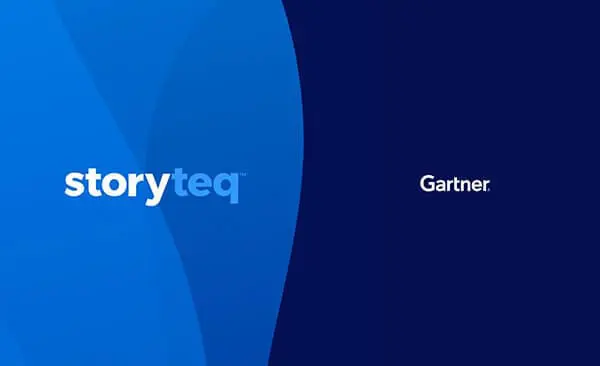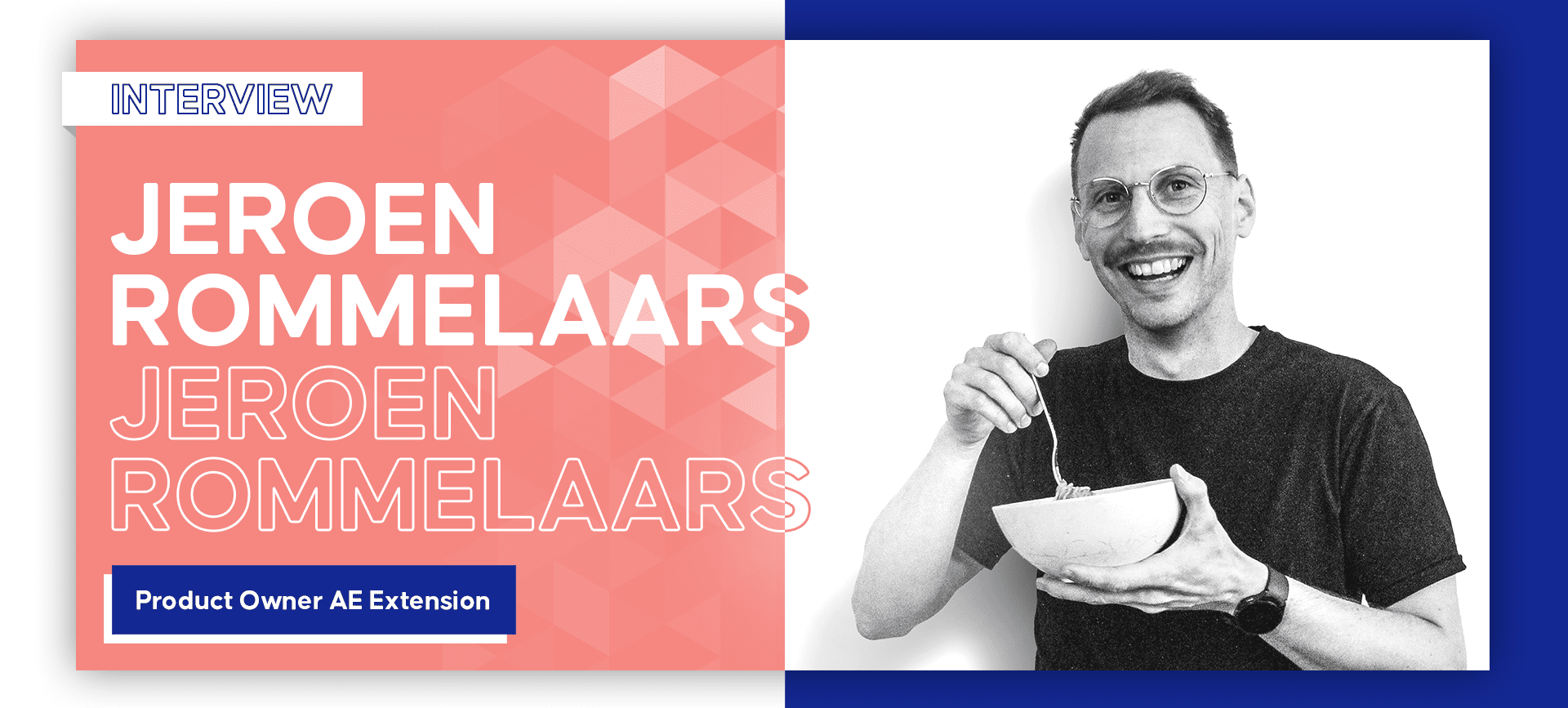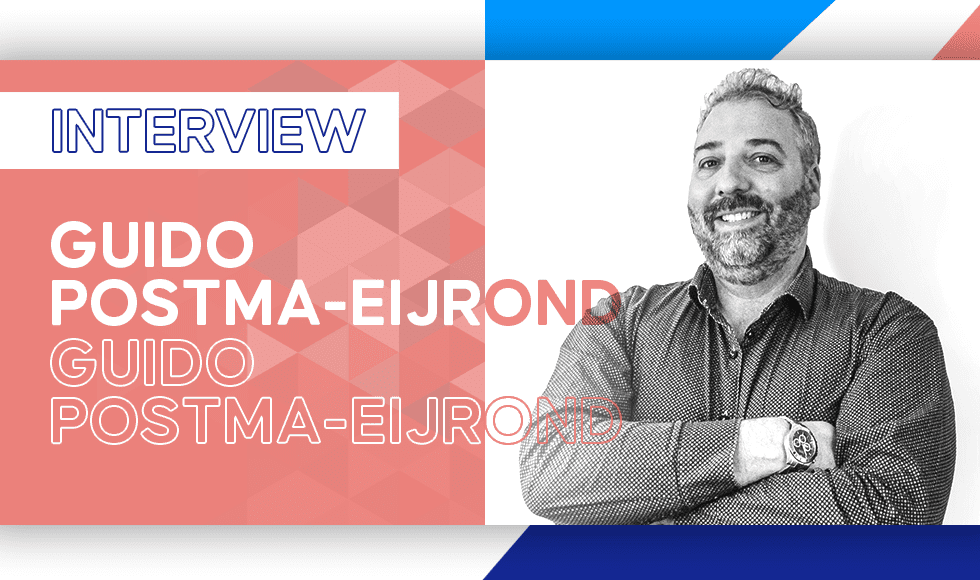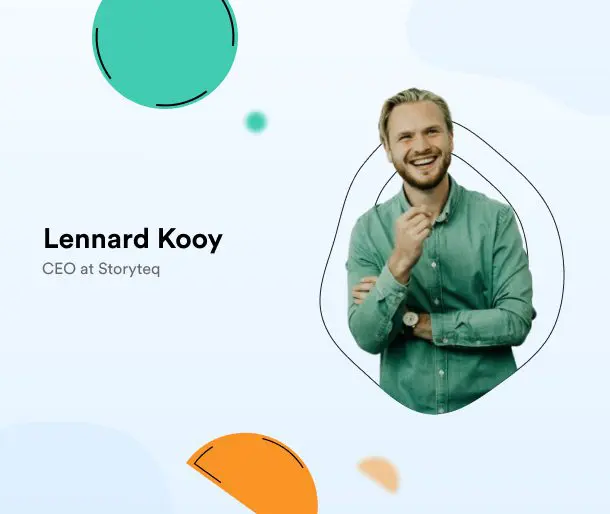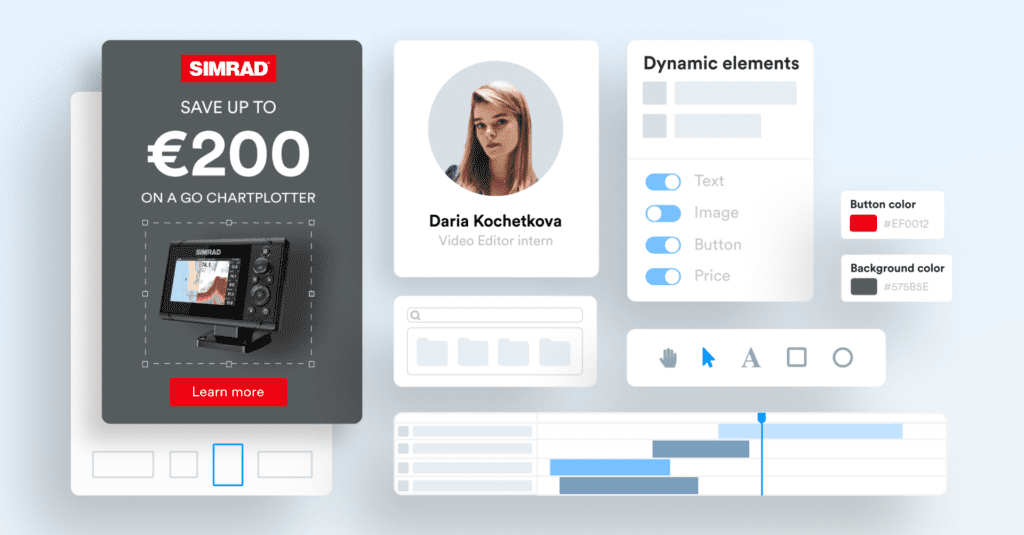With our After Effects extension, you can turn any existing After Effects project into a template with dynamic variables. Think of background colors, voiceovers, actors or products as now elements which you can choose to easily swap out for other variations.
There are many more new and exciting features added to the extension but in this interview, Jeroen Rommelaars explains the total overhaul that was made to this extension and what this means for our solution overall.
What do you do here at Storyteq?
My name is Jeroen and I work at Storyteq as the Product Owner of the After Effects extension. I’ve been with the company since practically the beginning, and I was one of the people behind introducing dynamic video through After Effects. I had been building templates manually for many years, so at some point we decided that it is probably better for everyone to automate that part. I started writing some scripts which made the first version of the extension, but as my background is in video production, it was not the best idea to have me coding! I brought in our Full Stack Developer, Ronald, to make sure what I was making was usable. And it is now a very important part of Storyteq, and something I’m proud of that was started from scratch by us.
How long has V2.0 been in the making? And what have been some of the challenges associated with its development?
Development began slightly over a year ago. We did have the older version of the extension live, but the user was rather limited: you had to do things in a certain order or in a very specific way. Which in essence is fine but we knew clients ran into issues there. When you went off the beaten track, the extension might stop working and afterwards we had little control in getting you back on track. That was the main challenge we had to conquer for V2. We went back to the drawing board: We thought about what exactly we wanted to make, what philosophy we want behind it, what the pillars should be that ground it… Everything else we knew went out the window because we had a vision for a product that allowed the user as much freedom as possible within After Effects.
We also reinvented the entire backend (the render farm which renders out your videos or banners). This helped us to get rid of unnecessary steps. For example, the way we handle files and fonts etc. This is now very streamlined and the system is much faster and more modern.
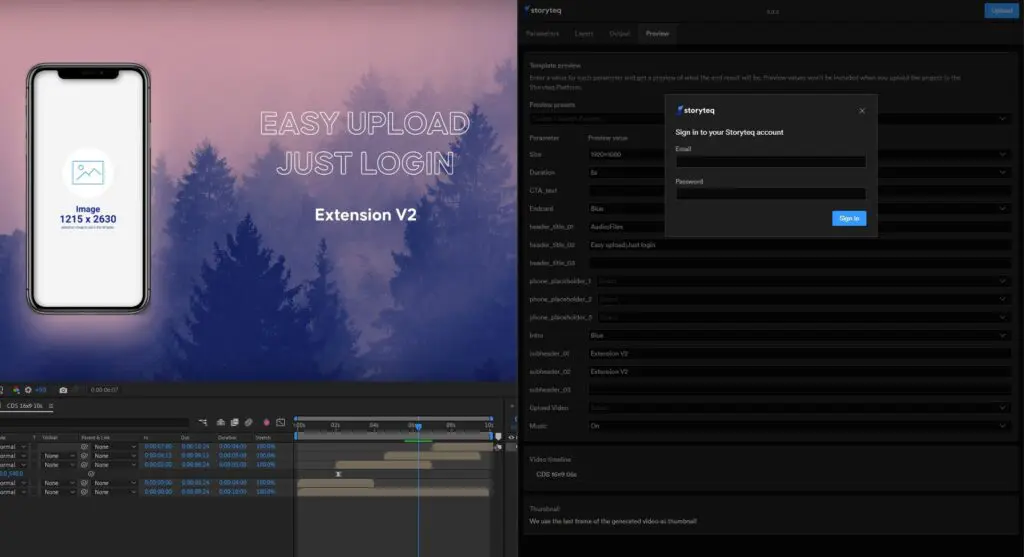
What has been a highlight in the process for you and the team that worked on this?
The highlight was definitely when we got our first render out from the platform. We had so many ideas on paper, so seeing it work in reality was the proof we needed that our hard work was paying off. To see it as viable and one that will open up possibilities for our clients.
What value does this release provide for our clients? How does it meet end-user needs and requests?
In general, the extension is there to change your After Effects project into a template, allowing you to create many variations, without having to open up any other program to render out these creative assets. But specifically this extension allows you to set up this process for yourself. Before, we had to set up templates for clients from their files. Changes were cumbersome as they had to get in contact with us to communicate these. The user now has a lot more freedom with less rigid guidelines.
What kind of support will we offer our clients as they come to grips with this new software?
If things do not work, we’re there to help. Within reason, of course, because we don’t support some more exotic features within After Effects. But within our scope of what should work, we offer as much support as possible. For example, if a render is refusing to render! We are always listening and implementing feedback from clients too, while we also love thinking along with their creative plans and brainstorming ways to achieve their aims. Of course, we keep our clients updated by having extensive guides and regular release notes.
What new feature are you most excited about?
We want to match the older version in terms of raw features. We snuck a couple of new ones in there such as the support for replaceable audio which wasn’t possible before. In general however the new feature is that V2.0 offers more creative freedom and less limitations. Now you can make custom logic and build whatever you want. Also, importantly, we love the fact that you can get your project easily on our platform with one click of a button.
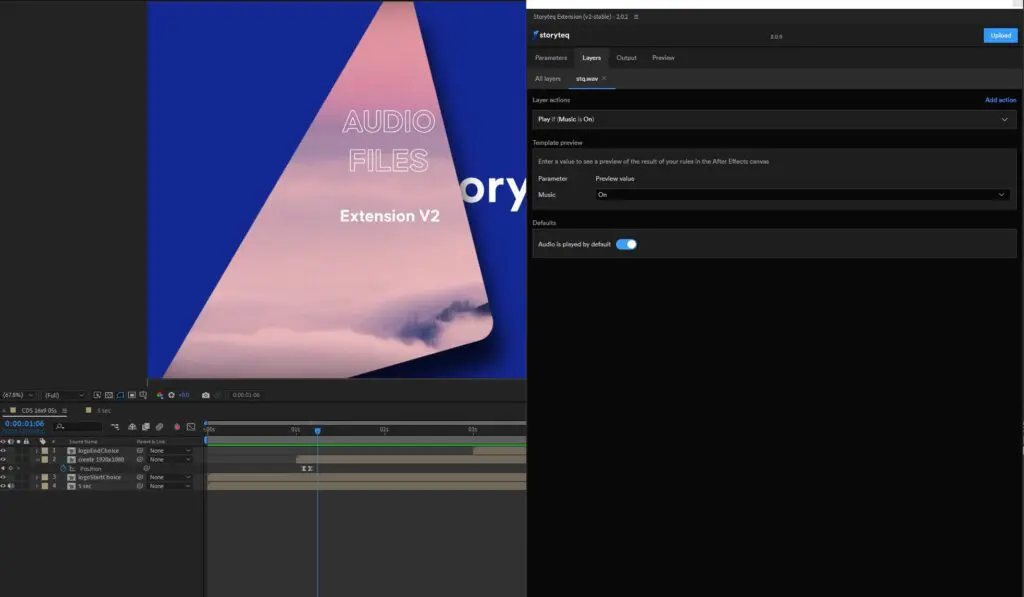
How much of the software has been tested? Has anything been left untested and why?
Some clients are testing it currently. The entire extension has been tested quite thoroughly, as has the process of creating a template within it. There are dozens of approaches that we might move towards eventually, but for now we’re letting clients do their thing, within their own workflow, with their own files. We need input from clients to find out how they use After Effects after using this version for a while. So it’s an ongoing process that is built by the needs of our client base.
What does success look like post release? How would you measure it?
Success would be a lot of clients using the extension and finding it works smoothly, without issues! Also, it would be great to see curiosity around it, where people are asking, “Can we add this?” or “How do we make this happen?” rather than, “why isn’t the [name of existing feature] working?!” That would feel like success.
You can connect with Jeroen over on LinkedIn or read another interview with one of our expert Video Automation Developers.
